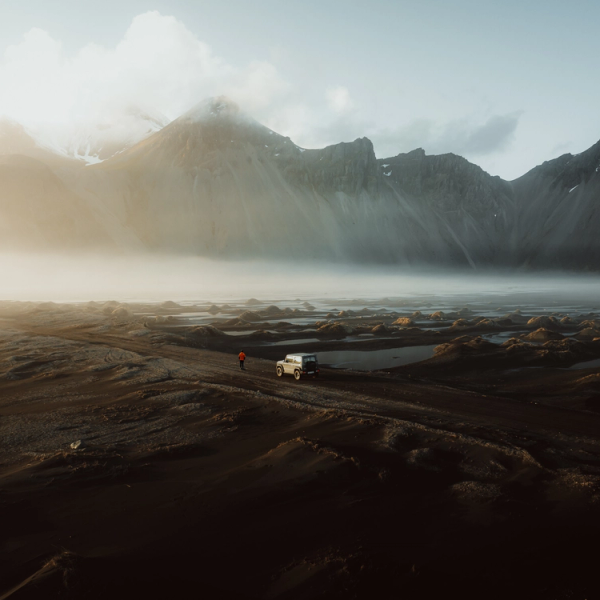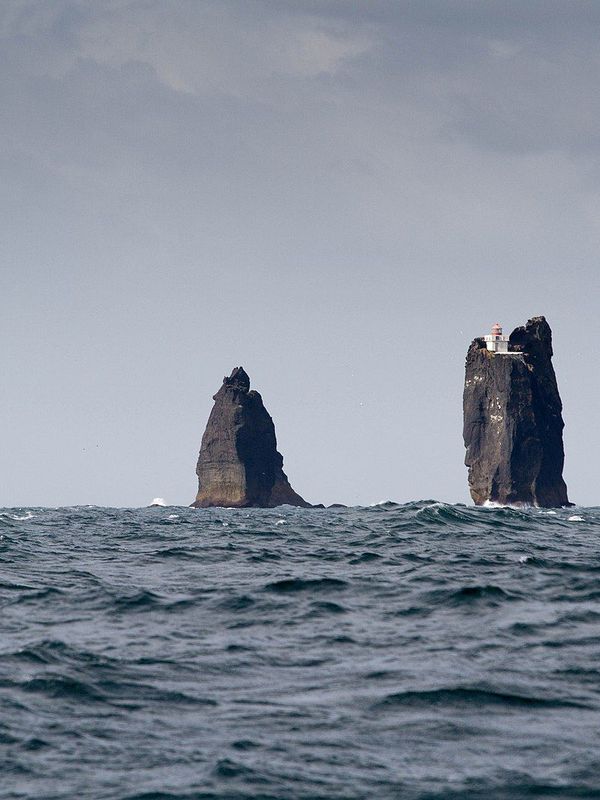
Þrídrangaviti, one of the most unique and spectacular lighthouses in the world
(Photo credit: voilier.evidence@gmail.com) In the middle of the North Atlantic Ocean, at night, sailors can suddenly see a light that seems to come from nowhere. They know that Iceland’s mainland is really close, but this is not it. Welcome to Þrídrangaviti Lighthouse (also known as Þrídrangar), one of the most isolated and breathtaking lighthouses in the world. This solitary beacon, surrounded only by the waves and the endless sea, looks nothing like you’ve seen before. This place, located atop one of three sea stacks, was built to prevent ships from wrecking in this rocky part of the sea.
Near the Westman Islands, in front of Iceland’s south coast, this lighthouse tells a story of remoteness and isolation.
Key Takeaways
- Þrídrangaviti is a lighthouse on top of a sea stack.
- It’s located in front of Iceland’s south coast, near the Westman Islands.
- It was built in 1939 and can only be accessed by helicopter.
About Þrídrangaviti Lighthouse
Without a doubt, Þrídrangaviti is far from your typical holiday destination. Its name means "Three Rocks Lighthouse," which perfectly describes its setting, and is a marvel of human ingenuity set against the wild forces of nature. Built in 1939, it clings to the tallest of three sea stacks off the coast of the Westman Islands, about 7.2 kilometers (4.5 miles) from Heimaey, the main island in this archipelago. It was constructed to guide ships through this difficult part of the North Atlantic Ocean. These three rock formations can be invisible in the night, which can be a threat to navigation at night. Its location was chosen for its visibility, but building something here meant a huge challenge. Workers had to climb vertical cliffs and endure harsh weather to build it, and the materials were brought here in fishing boats and then taken up by hand. The engineer who was in charge of the construction hired experienced climbers from the Westman Islands to undertake the task.
The lighthouse itself is a modest structure, painted white with a red roof, standing only 6 meters tall (barely 20 feet). There was no need to build a large structure, as the rock provided enough height for the guiding light. In fact, its simplicity contrasts with the dramatic basalt pillar it occupies, rising 36 meters above the ocean. The surrounding sea stacks, sculpted by volcanic activity and the relentless action of the ocean, create a sight that looks like no other place. In the past, keepers had to live there, in a small room, alone for weeks. Today, the lighthouse is automated, but it’s easy to imagine how life there was back in the day. Maintenance workers can only get to the lighthouse by helicopter, as there’s a small heliport on top of the rock.
Visitors are rare, as access is limited to helicopter tours or boat trips, and only if the weather allows it. While these tours offer stunning views of the lighthouse and its surroundings, entry to the lighthouse itself is prohibited due to safety and preservation reasons.
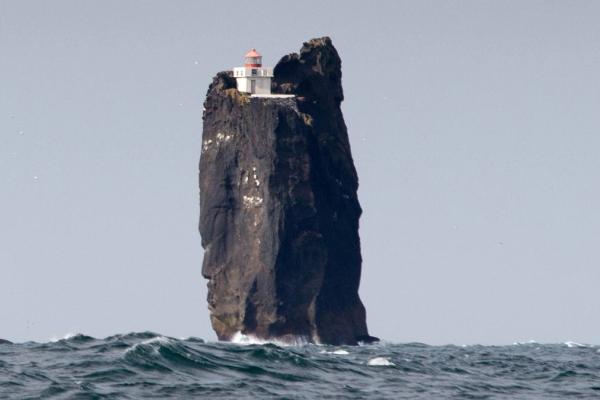
Picture credit: https://www.nespechej.cz/
The Westman Islands
Most tours to Þrídrangaviti Lighthouse depart from the Westman Islands, known as Vestmannaeyjar in Icelandic. The Westman Islands are a small volcanic archipelago off Iceland’s south coast, known for their dramatic landscapes and vibrant wildlife. It’s a group of 15 islands and several sea stacks, and only one of the islands, Heimaey, is inhabited. It’s home to around 4,300 residents, and even though it is modest in size, it offers a lot for those who go there. Heimaey is crowned by the Eldfell Volcano, which erupted in 1973, forcing the evacuation of Heimaey’s population and reshaping the island’s landscape and culture.
However, most of the tourists who visit the Westman Islands are attracted by the wildlife present in the archipelago. In fact, in recent years, Vestmannaeyjar has become a cornerstone of Iceland’s tourism, drawing visitors for its puffin colonies, whale-watching tours, and hiking trails. The islands’ cliffs and caves host thousands of seabirds, while the surrounding waters are full of marine life. The region’s unique blend of natural wonders and human history, makes it a must-visit for those exploring Iceland’s wilder side.
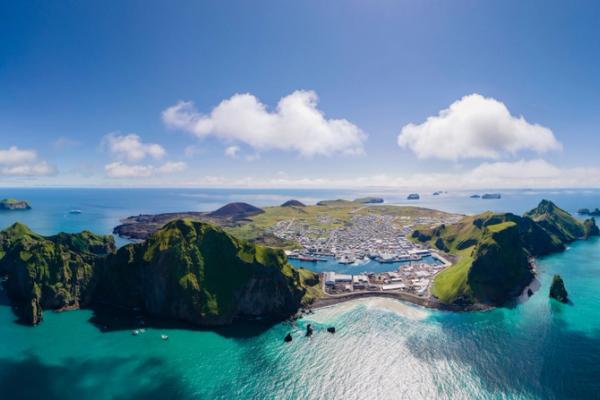
Where’s Þrídrangaviti Lighthouse and How to Get There
Þrídrangaviti Lighthouse is one of the most remote structures in Iceland, and it’s difficult to get there. In fact, as we mentioned earlier, the lighthouse is closed to visitors, and only authorized personnel can access it. Its position on a sea stack in the open Atlantic makes it inaccessible by foot or vehicle. It’s about 7 kilometers west of the Westman Islands, and the only way to get there is by helicopter or boat, both of which depend heavily on weather conditions.
Helicopter tours, offered by operators in Heimaey, provide a bird’s-eye view of the lighthouse and surrounding stacks, while boat trips get closer to the base of the rock formations, offering a unique view.
If you want to go to the Westman Islands, the route from Reykjavik is quite easy. The most common itinerary is a 2-hour drive to Landeyjahöfn, a small harbor on the south coast, followed by a 35-minute ferry to Heimaey. Start by taking the Ring Road, also known as Route 1, and head east. After 125 kilometers (77 miles), you’ll see a sign to the right announcing Vestmannaeyjar and Route 254. Make a turn to the right and you’ll arrive at the ferry terminal 15 minutes later. Ferries run several times daily, but schedules vary by season, so check ahead.
Once on Heimaey, connect with local tour operators for lighthouse excursions. Given the remote nature of Þrídrangaviti, booking tours in advance is essential, and flexibility with timing is key due to unpredictable weather.
The Weather at Þrídrangaviti Lighthouse
The weather around Þrídrangaviti is as dramatic as its setting. The Westman Islands experience a subpolar oceanic climate, with strong winds, frequent rain, and temperatures that rarely climb above 15°C (59°F) in summer or drop below -5°C (23°F) in winter. At the lighthouse, conditions are even harsher due to its exposed location.
Winds can whip across the open sea, creating choppy waters and low visibility. Fog is common, especially in spring and autumn, adding a layer of variability. Summer offers the best chance for clear skies, though sudden storms are always possible. Visitors should prepare for cold and wet conditions year-round. It’s strongly recommended to check the weather forecast before planning a trip.
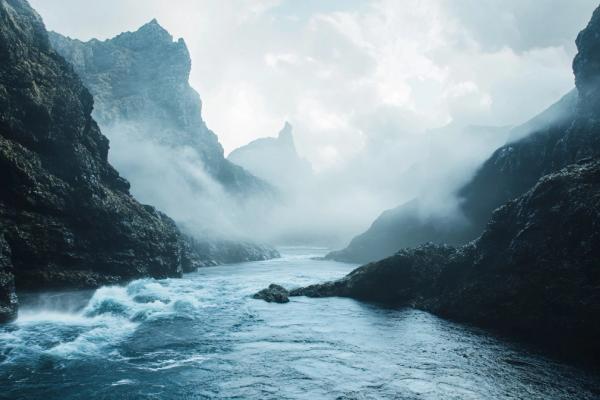
What to See and Do Near Þrídrangaviti Lighthouse
Although visiting the Þrídrangaviti Lighthouse can be difficult, the Westman Islands and Iceland’s south coast have a lot to offer.
Eldfell Volcano
On Heimaey, this 200-meter-high volcano is the most important geological feature. It’s also responsible for the most important event in the archipelago’s recent history. In 1973, Eldfell erupted and forced the evacuation of nearly all residents and reshaped the island’s eastern side. Today, hiking to the summit is possible after a 40-minute moderate trek. The views of Heimaey and the Atlantic from there are just fantastic. The trail goes through lava fields created by the eruption. Wear sturdy shoes, as the terrain can be uneven.
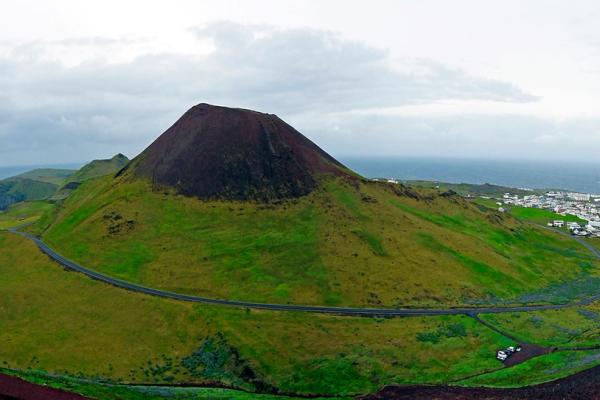
Elephant Rock
This striking basalt formation, located on Heimaey, is one of the most unique sights in Iceland. This huge rock resembles an elephant with its trunk dipped in the sea. It was created by volcanic activity and thousands of years of erosion. To get the best view, get on a boat tour. These tours often combine Elephant Rock with sea caves and cliffs.

Whale Watching
Several places in Iceland are top locations for whale watching, and the Westman Islands are one of them. The waters around the archipelago are full of these huge mammals, including humpback, Minke, and orca whales. Boat tours depart from Heimaey’s harbor and usually last around 2-3 hours. Summer (June–August) is the best season.
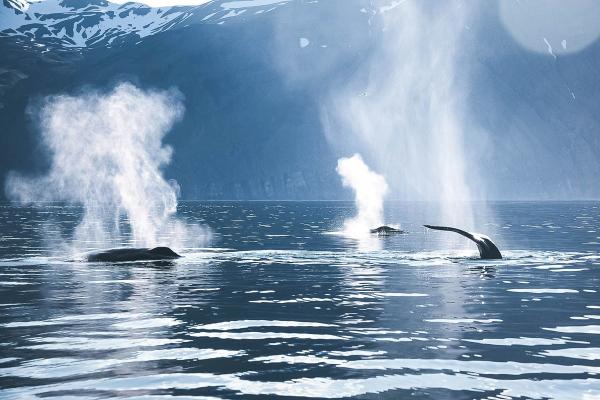
Puffins and Bird Watching in the Westman Islands
The Westman Islands host Iceland’s largest puffin colony, with millions nesting here from May to August. Guided boat or hiking tours take you to prime spots like Stórhöfði, the southernmost point of Heimaey, where puffins, guillemots, and kittiwakes can be seen perched on cliffs or darting across the skies. Tours often include insights into the islands’ ecology and the animals’ behavior.
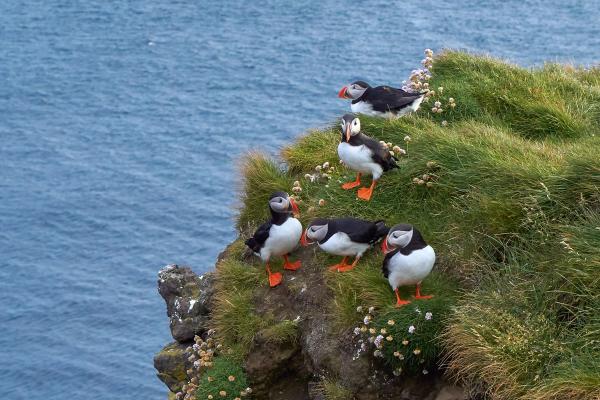
Seljalandsfoss
Located on the mainland, not far from Landeyjahöfn, this 60-meter waterfall is one of Iceland’s most iconic sights. If you’re going to the Westman Islands from Reykjavik, you just have to continue on Route 1 for a little bit instead of taking the detour to the ferry terminal. It takes a bit of time, but it’s an easy stop to add on your way to the islands. Seljalandsfoss is well known because there’s a walking path that goes behind the cascade, allowing you to see it from a unique point of view. The trail is slippery, so waterproof gear and grippy shoes are essential.
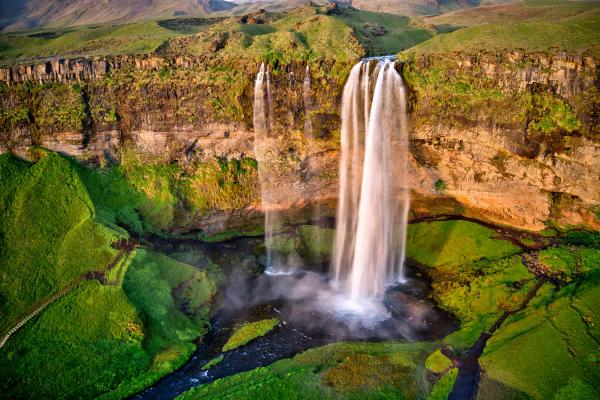
Gljúfrabúi
This smaller waterfall is very close to Seljalandsfoss, so you can make the most of your visit and see them both. Gljúfrabúi is not as well known as its neighbor, but it’s worth a visit. It’s concealed inside a narrow canyon, with a chamber that opens up at the end, where the water cascades over mossy rocks. To get there, you’ll need to walk through a shallow stream, and the terrain is quite uneven, so bring waterproof clothes and shoes.
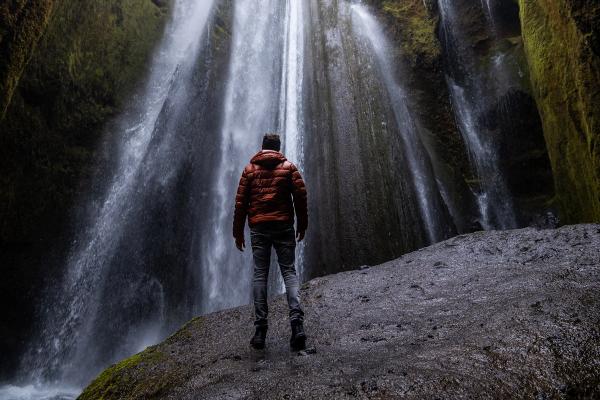
Travel Tips
- Book Transportation Early: Reserve ferry or flight tickets to Heimaey well in advance, especially during the summer months (June–August). Check ferry schedules, as they vary by season.
- Plan for Lighthouse Tours: Contact tour operators in Heimaey to book helicopter or boat trips to Þrídrangaviti. Be flexible, as weather can force you to change plans.
- Dress for the Elements: Wear layered clothing, including a waterproof jacket, pants, and sturdy, grippy boots. Pack a hat, gloves, and scarf, as winds are strong all year.
- Pack Smart: Bring a small backpack with water, snacks, a camera, and binoculars. This way, you can use the trip to spot seabirds. Sunglasses and sunscreen are crucial in summer, as the sun can be surprisingly strong.
- Explore Heimaey: Take the opportunity to discover the Westman Islands. Although small, they have a lot to see and do.
- Check Weather Daily: Monitor forecasts for Heimaey and the South Coast, as conditions change rapidly.
Conclusion
Þrídrangaviti Lighthouse is a sight that is difficult to forget. Its dramatic and isolated location makes it one of the most unique lighthouses in the world. Although visiting the lighthouse itself is not allowed, you can see its astonishing setting on a boat tour. The area also offers opportunities to discover part of Iceland’s wildest side. Take the opportunity to discover the Westman Islands and connect with the local wildlife and culture.

